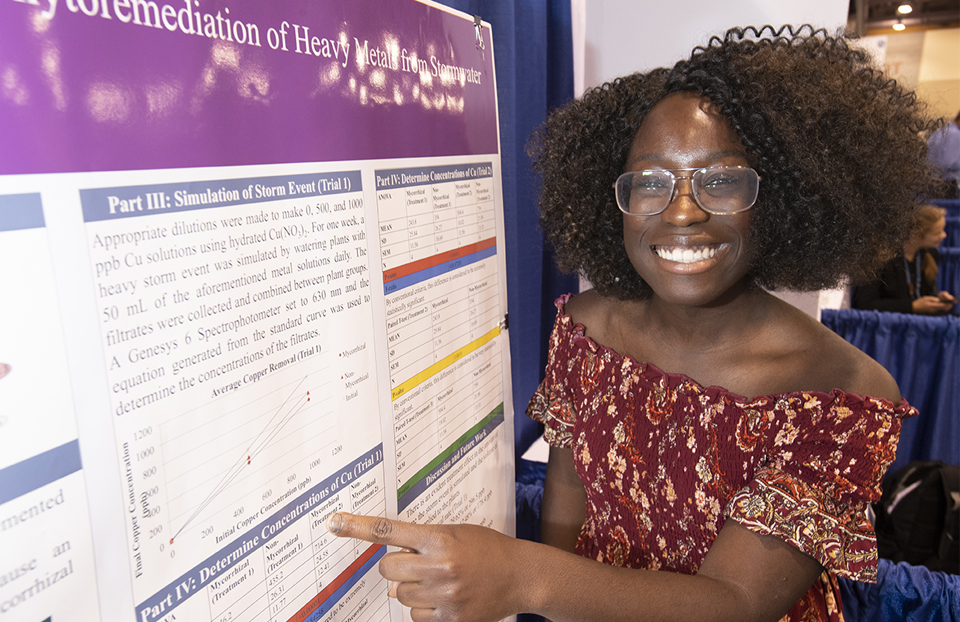Plant Sciences
Code: PLNT
Sponsored by Society for Science

Studies of plants and how they live, including structure, physiology, development, and classification. Includes plant cultivation, development, ecology, genetics and plant breeding, pathology, physiology, systematics and evolution.

Subcategories:
Agriculture and Agronomy
Ecology
Genetics and Breeding
Growth and Development
Pathology
Plant Physiology
Systematics and Evolution
Other
Agriculture and Agronomy (AGR): Application of the various soil and plant sciences to soil management and agricultural and horticultural crop production. Includes biological and chemical controls of pests, hydroponics, fertilizers and supplements.
Ecology (ECO): The study of interactions and relationships among plants, and plants and animals, with their environment.
Genetics and Breeding (GEN): The study of organismic and population genetics of plants. The application of plant genetics and biotechnology to crop improvement. This includes genetically modified crops.
Growth and Development (DEV): The study of a plant from earliest stages through germination and into later life. This includes cellular and molecular aspects of development and environmental effects, natural or manmade, on development and growth.
Pathology (PAT): The study of plant disease states, and their causes, processes, and consequences. This includes effects of parasites or disease-causing microbes.
Plant Physiology (PHY): The study of functions in plants and plant cells. This includes cellular mechanisms such as photosynthesis and transpiration, and how plant processes are affected by environmental factors or natural variations.
Systematics and Evolution (SYS): The study of classification of organisms and their evolutionary relationships. This includes morphological, biochemical, genetic, and modeled systems.
Other (OTH): Studies that cannot be assigned to one of the above subcategories. If the project involves multiple subcategories, the principal subcategory should be chosen instead of Other.